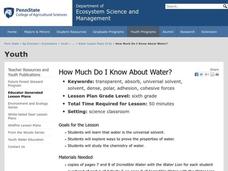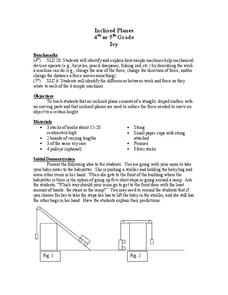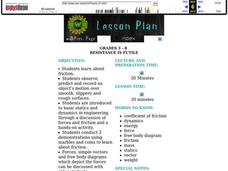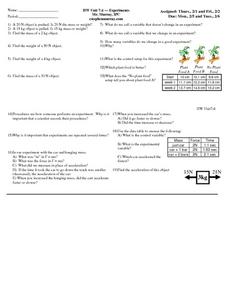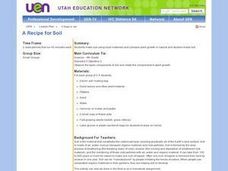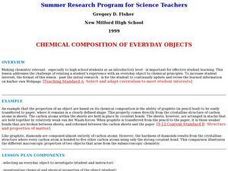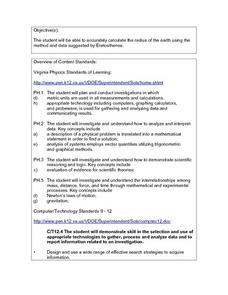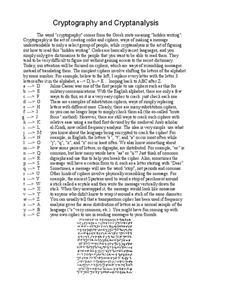Curated OER
Measurement: Using the balance
Students use a balance and gram cubes to measure several different objects. They then record their results on a data chart and answer questions about them.
Missouri Department of Elementary
Fatal Accident
While there may not be any ghostbusters in the neighborhood, there are plenty of emergency response agencies ready to give support if something is amiss. To that end, instructors invite a member of an emergency response agency to address...
Curated OER
Simple Machines or Are They?
Students discover basic machines and how they make completing work easier. They identify two basic machines, the inclined plane and the lever and the functions of these simple machines.
Curated OER
The Effects of Volcanoes
Learners use the internet to research the effects of volcanoes. They create a chart showing the negative and positive aspects that a volcanoe can bring to an area. Using PowerPoint, they create a presentation showing the negative and...
Curated OER
How Much Do I Know About Water?
Sixth graders explore ways to analyze the properties of water and examine the chemistry of water. In this water lesson students work in groups and complete several activities.
Curated OER
How Much Do I Know About Water?
Sixth graders explore how water behaves on a penny. In this states of matter lesson, 6th graders observe water as they add drops to a penny. This lesson helps students apply the adhesive properties of water to the water cycle.
Curated OER
Inclined Planes
Students break into small groups with each group using 3 books, a board with pulleys attached at both ends, a toy cart, a small paper cup with a long piece of string attached the end and some pennies. They test their guesses to see if it...
Curated OER
RESISTANCE IS FUTILE
Learners explore friction and use objects such as coins and marbles to study the concept.
Curated OER
Magnet Trackstar
Learners explore websites created by other young people on the topic of magnets. These sites are in the form of a TrackStar and are accompanied by a worksheet to guide them in their information gathering.
Curated OER
Experiments
In this experiments learning exercise, students determine the weight and mass of different objects. Students review variables in an experiment. This learning exercise has 8 short answer questions and 11 problems to solve.
Curated OER
Can You Make A Penny Float?
Students explore the concept of density by trying to make a penny and other materials float.
Curated OER
Blowing in the Wind
Students identify and interpret maps, graphs, charts, tables and political cartoons. Students identify what a compass rose is and review its meaning in relation to standard directions. Students design their own weathervanes. Students...
Curated OER
Circuit Basics
In this circuits learning exercise, students compare voltage, current, and resistance. Students draw a battery with a resistor, switch, and light bulb. This learning exercise has 6 short answer, 1 matching, and 6 drawing questions.
Curated OER
Investigation 7 - Rubbing Objects Together
Third graders investigate rubbing two objects together to produce heat.
Curated OER
Magnets
Second graders classify objects and formulate hypotheses regarding various materials and their magnetic properties. They complete a worksheet and watch a video.
Curated OER
Shake, Rattle and Erupt
Students study myths regarding four earthquakes myths. They receive a list of supplies each family should have at home to prepare for an earthquake and construct an "Earthquake Preparation" poster showing some of the most important items...
Curated OER
Design of Airfoils and Problem- Solving Using FoilSim
Ninth graders, after reading the explanation given below, complete the problem-solving activities to demonstrate an understanding of the concepts presented.
Curated OER
Stream Flow in Blacks Creek
Learners explore what factors affect the stream flow in a local body of water. They collect data to measure stream flow and discharge and construct a hypothesis concerning the factors affecting stream flow.
Curated OER
What Floats Your Boat?
Students discover the Archimedes principle through a buoyancy experiment. They measure the water displacement of a lump a clay which is denser than water then reshape the clay into a bowl which floats but displaces more water.
Curated OER
A Recipe for Soil
Fourth graders use local materials such as leaves and other plant matter; sand and pebbles to make soil. They plant seeds in the manufactured soil and in natural soil and then observe and record the results.
Curated OER
Chemical Composition of Everyday Objects
Learners relate chemistry to an object they use everyday. They research information related to chemistry and create their own webpage. They are to keep their page up to date as new observations are taken.
Curated OER
Looking into Eratosthenes' Radius of the Earth
Students, in small groups, research Eratosthenes and his calculations of the Earth's radius. They write a summary of the person, the experiments and his calculations to determine how accurate Eratosthenes was in his estimations of the...
Curated OER
Maximum Power Point
Pupils investigate how to optimize the power output of a photovoltaic cell using a home-made gnomon stand. They use data collected to create current-voltage and power-voltage curves to determine the "maximum PowerPoint," (MPP) at which...
Curated OER
Cryptography and Cryptanalysis
In this cryptography and cryptanalysis worksheet, 8th graders read the explanation and example for codes and ciphers, then answer 2 questions and decipher 2 messages.




